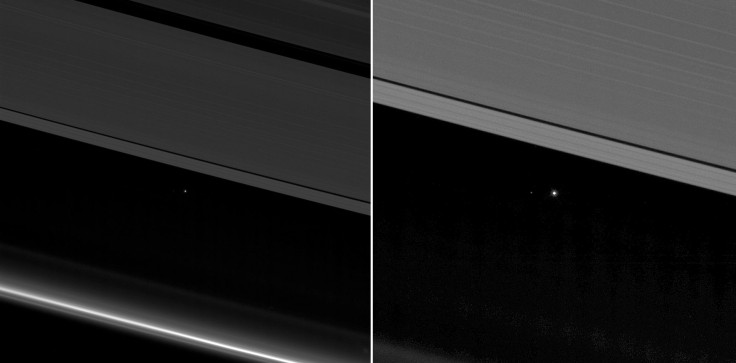NASA Images Of Saturn And Its Rings: Cassini Spacecraft Goes On Dangerous Mission

The Cassini spacecraft is taking the plunge — between Saturn and the giant planet’s rings.
NASA officials are holding their breath as the unmanned craft dives through today, news service AFP reported, because “communications with the spacecraft will go dark during the dive and for about a day afterward, while it makes scientific observations of the planet.” The earliest NASA could get in touch with Cassini and learn whether it will live to tell its tale is just after 3 a.m. on April 27.
This is it! Through the gap between #Saturn and its rings. Instruments are on, but we're out of contact with Earth. Here we goooooo! pic.twitter.com/3J7aRZS0IH
— NASA Solar System (@NASASolarSystem) April 26, 2017
But the payoff for the tense wait could be huge, as it could show scientists details of Saturn and its wide but shallow rings that they have never seen before.
“That gap is a region no spacecraft has ever explored,” NASA said.
Read: What Earth Looks Like If You’re Living on Saturn
Part of what makes the dive so dangerous, AFP says, is that Cassini will be only 1,800 miles above Saturn and thus potentially in the path of nearby and quickly moving ice and space rocks.
According to NASA, even though “no particles larger than smoke particles are expected,” the spacecraft is using a “dish-shaped high-gain antenna as a protective shield” during the trip just in case.
It’s the way the antenna will be facing as it protects Cassini that is causing communication with Earth to cut out. But during the dive, NASA said, the spacecraft will be collecting information about ring particles that will help with future plunges.
Cassini has been sending back information from Saturn and its moons for more than 10 years, but is on the final leg of its journey — what is being called the Grand Finale. Shortly before it runs out of fuel later this year, NASA will send it plunging into Saturn’s atmosphere to burn up and dramatically end its mission. One of its most crucial findings is that Saturn’s moon Enceladus could potentially harbor alien life.
See also:
© Copyright IBTimes 2024. All rights reserved.




















